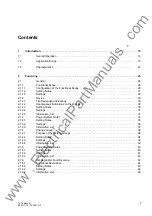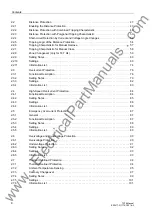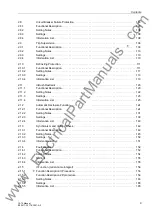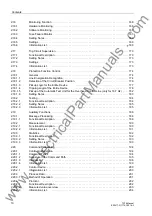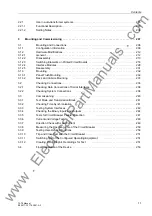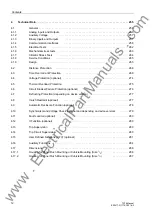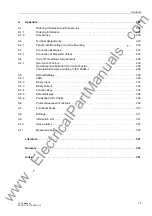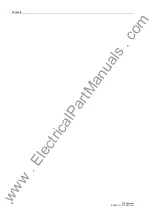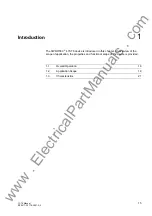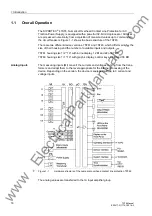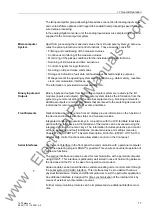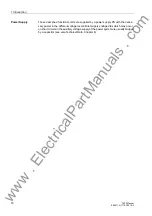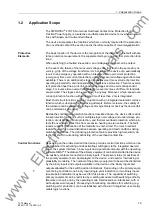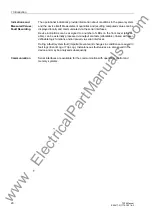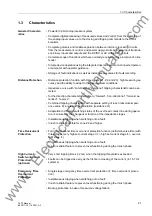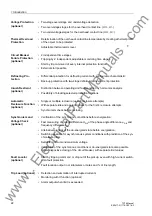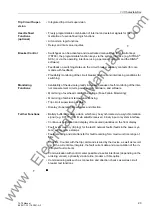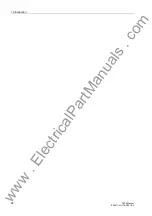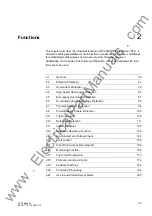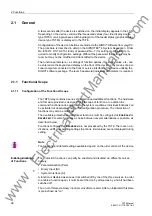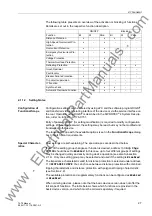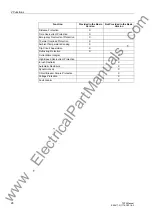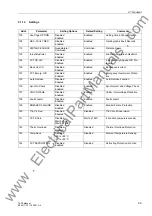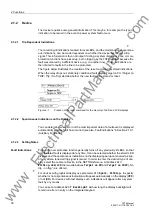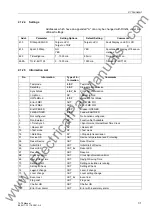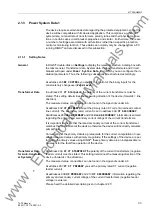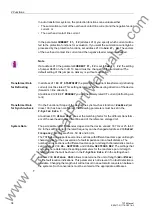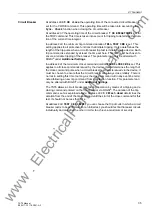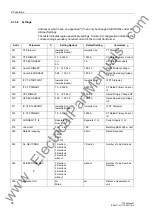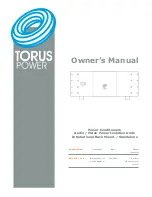
1.3 Characteristics
21
7ST6 Manual
E50417-G1176-C251-A3
1.3
Characteristics
General Character-
istics
• Powerful 32-bit microprocessor system
• Complete digital processing of measured values and control, from the sampling of
the analog input values up to the closing and tripping commands to the circuit
breakers
• Complete galvanic and reliable separation between internal processing circuits
from the measurement, control, and power supply circuits by analog input transduc-
ers, binary inputs and outputs and the DC/DC or AC voltage converters
• Complete scope of functions which are normally required for the protection of a line
feeder
• Simple device operation using the integrated operator panel or a connected person-
al computer with operator guidance
• Storage of fault indications as well as instantaneous values for fault recording
Distance Protection
• Distance protection function with three zones (Z1, Z2, and Z3), high measuring ac-
curacy and the ability to adapt to the given system conditions
• Impedance curve with “combined” or “polygonal” tripping characteristic can be se-
lected
• for the direction characteristic settable to “forward“, “non-directional“, ”forward ex-
tended“, “reverse“;
• Combined tripping characteristic with separate setting of reach (absolute imped-
ance value Z), angle and load limitation (resistance R);
• Adaptation to different switching states of the overhead contact line during opera-
tion is ensured by the changeover function of the impedance stages
• Instantaneous tripping when switching onto a fault;
• Inrush restraint possible for zone Z2 and higher;
Time Overcurrent
Protection
• Full non-directional time overcurrent protection function (definite/inverse time) with
three stages (very high set current stage I>>>, high set current stage I>>, overcur-
rent stage I>)
• Instantaneous tripping when switching onto a fault;
• Inrush restraint feature to prevent overfunctioning during the inrush phase
High Current
Switch-onto-Fault
Protection
(optional)
• Very short tripping times (<2 ms) when the tripping threshold is exceeded
• Faults can be tripped as early as the first zero crossing of the current (in 16.7 Hz
systems)
Emergency Time
Overcurrent
Protection
• Single-stage emergency time overcurrent protection (I> time overcurrent protec-
tion)
• Instantaneous tripping when switching onto a fault;
• Inrush restraint feature to prevent overfunctioning during the inrush phase
• Backup protection in case of measured voltage failure;
www
. ElectricalPartManuals
. com

